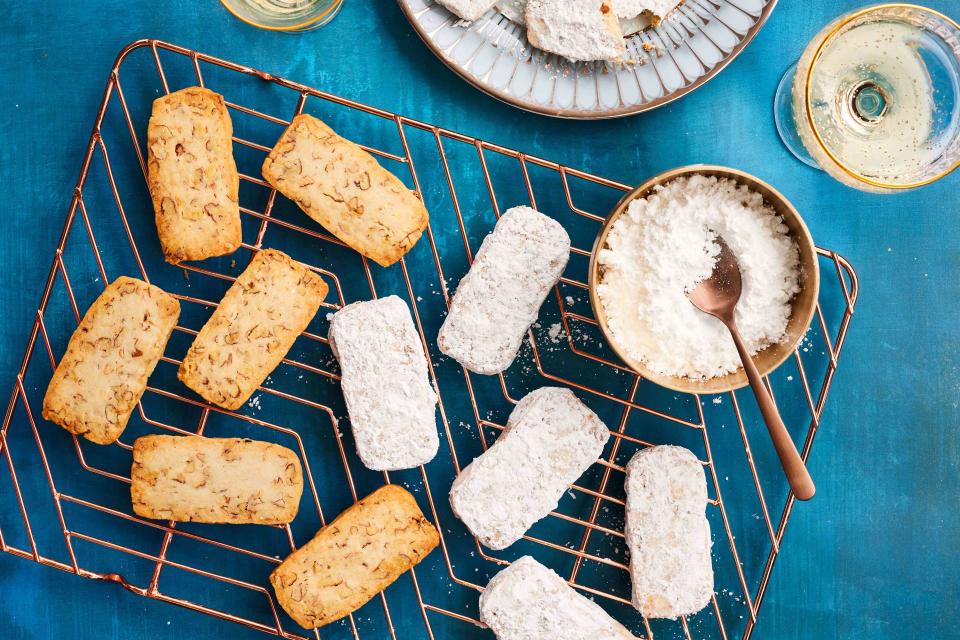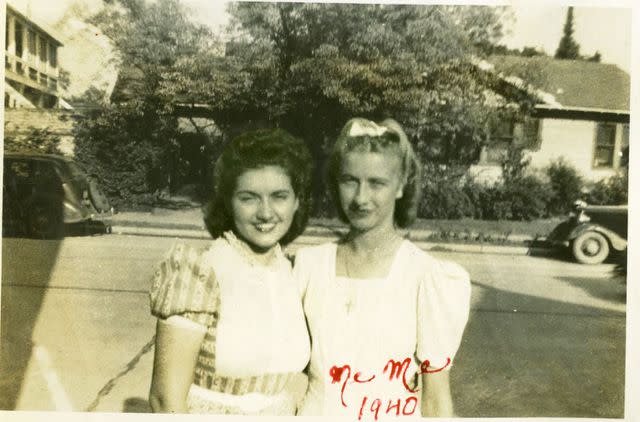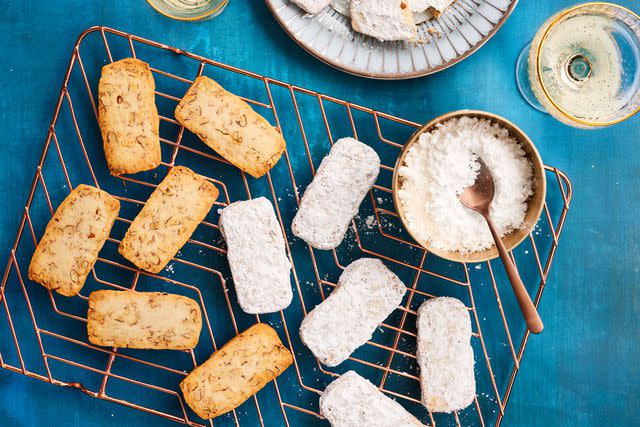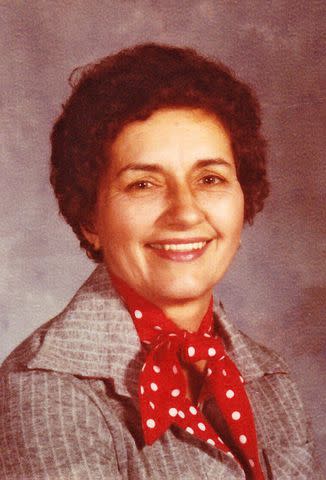The Legend Of Great-Aunt Inez’s Sand Tarts
Not all family recipes are passed down. Some are baked by a 1950s some economics teacher with a penchant for pecans.

Victor Protasio; Food Stylist: Rishon Hanners; Prop Stylist: Christina Daley
It was 2016, and I was making an appearance at a friend’s holiday potluck in Manhattan before flying home to Lafayette, Louisiana. I was 30, in a dead-end “situationship,” and sharing a sixth-floor walk-up with a grumpy cockapoo and strangers from the internet.
It would be my first Christmas without my Great-Aunt Inez, my Maw Maw’s second-oldest sister, who was the yin to my yang, my Ya-Ya with the most endearing eccentricities, a kindred spirit who encouraged my creative pursuits and curious nature. She was the first person to say to me, after I’d performed a one-woman show at age 5 in her kitchen, “Bébé, someday you’re going to New York City!” She believed in me, so I believed in myself.
I was still trying to make my dream as a writer in New York City come true when I got the news that she’d passed away peacefully at 92. While I was lucky to spend her last Christmas with her, I wasn’t able to return for her funeral in January, which crushed me.

Courtesy MEGAN BROUSSARD
At left, Inez LeBlanc VincentThat year, I thought I’d bake her famous sand tarts for the first time and share them with new friends in her honor. I dug up her handwritten recipe card, a photo I’d saved on my phone’s camera roll from my last visit home. The only ingredient I was missing was pecans. So I filled up two totes with prechopped bags of nuts from the corner deli and wondered what she’d think of me spending almost $55 for something that fell at her feet for free every winter. The batch of cookies came out warm and tan, just like her. I coated them in “Louisiana snow”—powdered sugar—then braced for the chill of the real thing en route to the Upper East Side.
“Did you bring something Cajun?” the host asked. She was a food editor, so I knew she’d appreciate them. It was my shtick, being Cajun, something I could rely on when I felt out of place in the concrete jungle. In a city where I knew no one, at least I knew myself. Or so I thought.
I didn’t realize I’d be walking into one of the most embarrassing moments of my adult life.
She grabbed a tart, took a bite, made a face, and asked, “Aren’t these just Pennsylvania Dutch cookies?”
“Look them up,” she said. “I think they’re the same.” Before I could say anything else, she’d turned to greet the next guest. I ran to the bathroom to Google “Dutch tarts Pittsburgh.” There it was. With my back against the door, I scrolled through aliases like “Pecan Snowball Cookies,” “Sandies,” and “Mexican Wedding Cookies.” Mais là! She was right. I wasn’t just mortified; I was shaken to my core. No one had questioned my Cajunness before.
Aunt Inez's Sand Tarts

Victor Protasio; Food Stylist: Rishon Hanners; Prop Stylist: Christina Daley
Alone on the subway, I wondered: How could Great-Aunt Inez’s sand tarts not be Cajun? They were a part of my Boudreaux-LeBlanc family traditions from baptisms to boucheries. She dedicated her life to the preservation of our language and culture, winning the prix d’honneur from Université Sainte-Anne in Church Point, Nova Scotia, for her mastery of the Louisiana French language. She reunited our Canadian relatives that were separated from our kin during Le Grand Dérangement by hosting a reunion in Louisiana. She was even flown to Philadelphia as a featured Cajun cook for a magazine.
Wait. Aha! Could this trip have been where she’d heard of Pennsylvania Dutch cookies? I knew she must have been laughing from Heaven as she watched me struggle on this wild l’oie (goose) chase. I became obsessed with discovering the origins of this recipe, and oddly, when I finally uncovered the mystery, I liked the real story even better.
“She got it from a cafeteria worker at the school,” my cousin Tommy, her son, told me. Then I knew that she was laughing.

COURTESY MEGAN BROUSSARD
As a home economics teacher in South Louisiana, Inez LeBlanc Vincent spent 60 years sharing the art of Cajun cooking with generations of students.When she was a home economics teacher, no one could keep her away from the cafeteria between classes. She loved to veillée, or visit, and learn tricks from the skilled cooks in the kitchen. Of course she added her own touch to the passed-on cookie recipe. Instead of keeping the tarts sphere-shaped, she pinched them into rounded rectangles (and sometimes half-moons) so she could monitor the edges. Golden corners meant they were ready. She also added five times the amount of nuts the recipe called for. She didn’t have pricey ingredients or high-tech appliances, but she had plenty of pecan trees.
I learned that the thing Great-Aunt Inez loved most was teaching others about what food could do for the survival of our culture. In this case, it meant turning an American dish into her own and incorporating it into our South Louisiana customs.
That’s when it clicked. Suddenly, I felt closer to my Great-Aunt Inez than I ever had when she was alive. She made Pennsylvania Dutch cookies—or sandies or whatever you want to call them—with the ingredients she had on hand. That’s the Cajun way, and that’s what I am doing in this new city of mine. I think she would be proud.
For more Southern Living news, make sure to sign up for our newsletter!
Read the original article on Southern Living.

